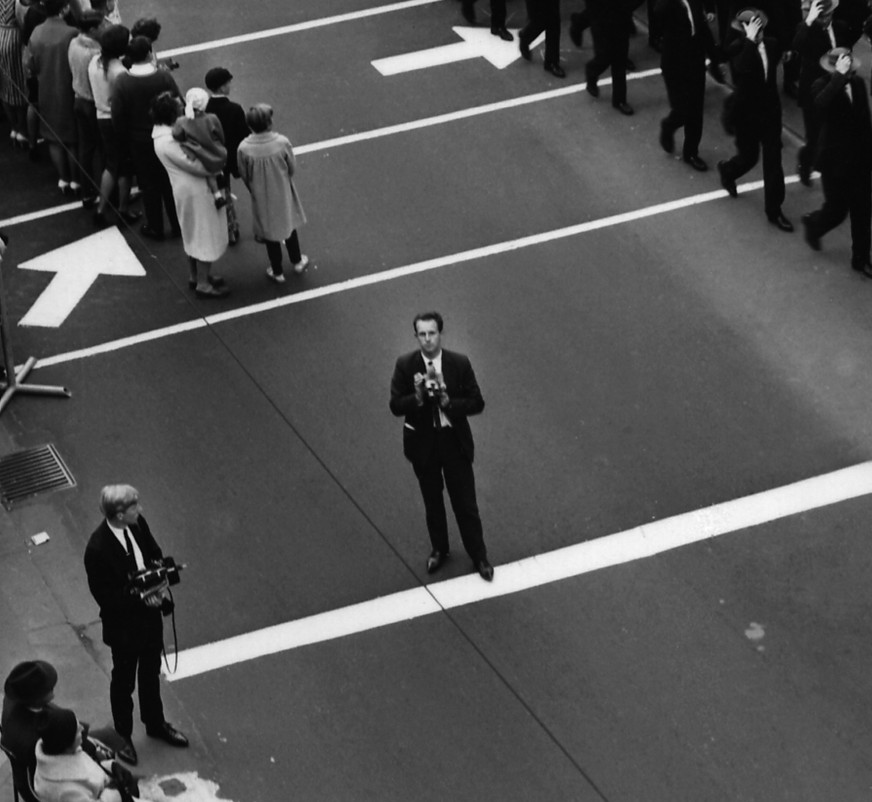‘Art School Anecdote’, Art Monthly Australia, May pp60-61
March 22
ANU School of Art
If, like me, you once went to an art school for your training as an artist, you might have found that some of the most valuable creative experiments you undertook weren’t for your classes, but were for school balls and parties; and that some of the most memorable conversations you had, with either lecturers or fellow students, occurred at after school drinking sessions rather than tutorials. Walter Gropius, the founder of the most famous art school of them all, knew this. He wrote into the Bauhaus’s curriculum mandatory parties, for which both staff and students had to design decorations and costumes, as we’ll as attend. These parties were part of the utopian current that so fundamentally animated the Bauhaus as a social ideal, and which animated the idea of the art school in general, both before the Bauhaus and since.
Walter Burley and Marion Mahony Griffin also liked a party, and didn’t need much encouragement to design elaborate costumes for themselves to attend impromptu rituals and entertainments, designed to herald a modern future, at sites like the new suburb of Castlecrag in Sydney. And a current of urban utopianism, historically related to the educational ideals of the Bauhaus, also ran through their design for Canberra.
It is the contention of Zoe Walker and Neil Bromwich, UK artists who have had a long interest the utopian impulse in contemporary social settings and media environments, that this utopian current is still relevant to today’s art schools, although admittedly at a lower wattage compared to all the other political and financial factors affecting art schools globally. Perhaps you saw Walker and Bromwich last year during the opening of the MCA extensions, sailing around Sydney Harbour in a mirror-tile covered boat, broadcasting in pirate-radio style an FM mash up of people talking about their experience of the marine life of the Harbour. That was part of their ongoing work Celestial Radio, which they have created in various places around the world.
Oral traditions such as radio broadcasting or storytelling — what Walter Benjamin called in his 1936 article, The Storyteller, ‘experience which is passed on from mouth to mouth’ — have been one of their abiding concerns as a way of maintaining and transmitting knowledge within communities. For instance they are interested in the much-maligned oral form of the ‘anecdote’. Narratively streamlined through frequent re-telling, and fueled by a bit of exaggeration and apocrypha, anecdotes are in fact still important for giving us all a sense of our place in time — on a personal, family, and community level.
When invited to produce a collaborative work with students at the ANU School of Art for Canberra’s Centenary, Walker and Bromwich brought these threads together in a work called Art School Anecdote. They and students from across the School designed and built a wonderfully ancient looking stage, which was based on the Griffin’s unrealised design of 1936 for the student union of India’s Lucknow University. The team designed and made fantastically modernist costumes for themselves, and created kookily choreographed Futurist rituals involving the hilarious, but po-faced recitation of the idealistic design philosophy of Marion Mahony Griffin from 1912; as well as the educational philosophy of the Bauhaus’s Johannes Itten from a 1919 lecture called ‘ Our play, our party, our work’; and the inaugurating Vision Statement of the Canberra School of Art by its first director, Udo Sellbach, who in the mid 1970s still saw Canberra’s new art school as being on the outer lip of the furtherest historical ripple that had been created by the Bauhaus.
The team trained themselves to spontaneously form into instant tableau vivants of famous paintings and, most importantly, invited past and present students and staff to retell alternatively poignant and amusing anecdotes about things that had happened to them at the school, and the things that had accumulated to give the school its presence within so many individual lives, as well as the community of Canberra. Some students even revisited the archives of the School’s well-known performance group Acme, which had formed in the 1990s around the former head of Sculpture, David Watt, and re-interpreted one of their works.
But the night wasn’t just a nostalgia fest for the ANU School of Art, in fact it was about every art school anywhere, and the enduring value of the idea of the art school through time. The climax of the performances was a fabulous tableau vivant of that old revolutionary chestnut, Delacroix’s Liberty Leading the People. This dramatic pyramid was backed with ex-student Tim Dwyer’s electronic looping and layering of his own musings on not quite living up to the standard model of art world success expected of him with his degree. The crowd went crazy. A genuine wave of collective joy had been created by the vernal force of the students, and we all felt borne up, above the specificities of our own good or not-so-good experiences with art schools, to be part of a larger, collective, transnational historical project.
Every five-year-old child who has played with blocks on the lounge room floor knows that utopias are bound to fail. But what these students, through Walker and Bromwich, reminded us was that the real failure is, when given the opportunity to ride that utopian impulse, to not say: YES!
Martyn Jolly
Martyn Jolly is Head of Photography and Media Arts at the ANU School of Art
Captions:
Square darkish image:
Tableau Vivant of Liberty Leading the People, from Art School Anecdote, ANU School of Art, Picture: Sarah Nathan-Truesdale.
Longer crop
Tableau Vivant of Liberty Leading the People, from Art School Anecdote, ANU School of Art, Video Frame Grab: Lachlan Pini.
